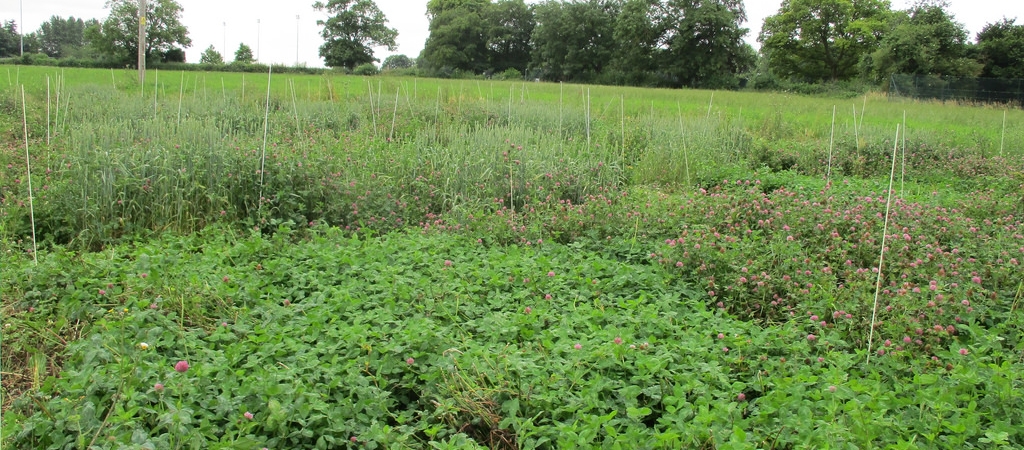Red clover variety response to cutting
Information on RAU on-farm research that looked at how cutting affected the yield and quality of 6 different varieties of red clover.
Resource explained
The capacity of red clover leys to help build soil fertility, produce high-protein forage and provide various ecosystem services is widely acknowledged. The variety of red clover that you use and the way in which it is managed can affect its performance value. This poster presents information detailing on-farm research carried out at the Royal Agricultural University (RAU) that examined the different responses of six different varieties of red clover (Trifolium pratense, L.) to cutting. The goal of the research was to evaluate the soil fertility-building capacity of the varieties under one and two cuts, and assess the yield and quality of subsequent crops. It provides some interesting insights into some red clover varieties, however it should be noted that results would be likely to vary according to soil and weather conditions.
Findings & recommendations
- The red clover varieties trialled were a mixture of early and late flowering and diploid and tetraploid varieties, with erect and prostrate growth habits.
- They were grown as monocultures on calcareous clay soil in conditions where the temperature was comparable with the yearly average and overall rainfall was less, and they were cut in July and October.
- Wild red clover is known to have intraspecies diversity, therefore it was predicted that there would be significant diversity within the agricultural varieties trialled.
- Dry matter (DM) and nitrogen (N) levels, measured in tonnes per hectare (t ha-1), and kilograms per hectare (kg ha-1) were compared in the aboveground plant material, and susceptibility to powdery mildew (Erysiphe sp) and clover rot (Sclerotinia sp) were evaluated.
- The results revealed that later flowering tetraploid varieties had significantly higher yields of DM t ha-1 and N kg ha-1 in the first cut, but only the mid-flowering variety (Maro) maintained good growth until the second cut.
- The variety Ruby was shown to be the least susceptible to both powdery mildew and clover rot infections.
(Header image: Different red clover varieties demonstrating the difference between early and late flowering, second year of red clover growth, a test crop of wheat is visible in the background. Photo credit: RAU).

